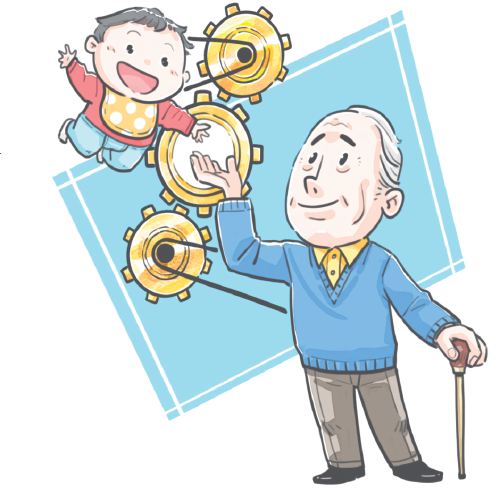Peking University, January 13, 2021: Implementing a proactive national response to population aging was put forward in the Proposals of the Communist Party of China Central Committee on Formulating the 14th Five-Year Plan (2021-25) for National Economic and Social Development and the Long-Range Objectives Through the Year 2035 adopted at the Fifth Plenary Session of the 19th CPC Central Committee. It indicates that such a strategy has been prioritized for China's long-term development.

To better adapt to the population aging, it was clearly proposed for the country to establish and improve the old-age and unemployment insurance systems as early as in the Eighth Five-Year Plan (1991-95), as well as the social security system. Later in 1992, it was mentioned in the report to the 14th CPC National Congress that the aging of the population merited attention. The graying of the population has attracted more and more attention since China became an aging society at the turn of the century. In 2000, it was proposed at the Fifth Plenary Session of the 15th CPC Central Committee that the aging trend had to be taken seriously and the social security and recreational needs of the elderly had to be met. In 2005, it was made clear at the Fifth Plenary Session of the 16th CPC Central Committee in 2005 that we must formulate policies and measures to deal with the country's aging population. In 2012, the Law on the Protection of the Rights and Interests of the Elderly was revised and made coping with population aging a long-term strategic task for the country. Since the 18th CPC National Congress in 2012, the CPC Central Committee has taken a systematic and coordinated approach to aging.It was made clear at the Fifth Plenary Session of the 19th CPC Central Committee that we must act on the national strategy of a proactive response to aging.
At present, China is moving toward a new stage of economic growth. With a moderately prosperous society about to take shape, the country is embarking on a new journey of building a modern socialist country in all respects. In the new stage, population aging is the most noticeable change and an irreversible long-term trend. A proactive approach to aging constitutes an important strategic move to adapt to the new development stage.
China is transitioning from rapid growth to quality growth. Fast growth was attributable mainly to the demographic dividend generated by a low dependency ratio, abundant labor and low labor costs. As the population ages, economic growth may be faced with more challenges, since the savings rate, consumption, labor supply and return on investment will decline,while the dependency ratio and labor costs will rise. The country's demographic dividend will eventually disappear, together with the advantages in production factors and costs, which will affect the potential economic growth rate. As a result, problems and challenges will manifest themselves in the quality of growth.The aging population trend, however, also presents opportunities for economic growth in that we can expand the elderly care sector, develop senior citizens as human resources and unlock their consumption potential. In a new stage of development accompanied by aging, we must boost factor efficiency and total factor productivity to drive growth. The national strategy of a proactive response to aging is of great significance to stable and long-term economic growth.
First, it will help shape the new dual circulation development paradigm by boosting domestic demand. China's per capita GDP has surpassed$10,000. The elderly in the new development stage will mainly comprise those who have relatively more substantial purchasing power and willingness to spend, which will accelerate the formation of a complete domestic demand system.
Second, it will help further structural reforms on the supply side. The incremental increase in the statutory retirement age is a critical way of increasing the labor supply and increasing the labor force participation rate. To implement the national strategy of a proactive approach to aging, we should focus on both supply and demand sides, especially integrating further structural reforms on the supply side into the new development paradigm, to guide and create new demand with high-quality supply.
The aging of the population has become one of the basic features of Chinese society. In essence, it is a change in the age structure, which will inevitably bring about changes in the social structure and social relations, thus affecting intergenerational harmony and social stability. Due to economic and social development, China's fertility rate continues to decline, as evidenced by the Sixth National Census in 2020 showed the population is undergoing a major turning point. The demographic structure reveals aging and sub-replacement fertility, with the total fertility rate significantly below replacement level.
To respond proactively to the aging trend, we should address the issue of the low fertility rate by restoring it to the level needed for regular replacement, so as to maintain the intergenerational balance for long-term and balanced population growth, which is the most fundamental and essential law of population development. We must take a systematic approach and address aging within the framework of social governance. We must modernize the social governance system and governance capacity and build institutions that are compatible with economic and social development accompanied by an aging population.
The authors are Chen Gong, director of the Population Research Institute at Peking University, and Sun Jiling, a postdoc at the Population Research Institute at Peking University.
Photo credit to: Cai Meng
Source: China Daily